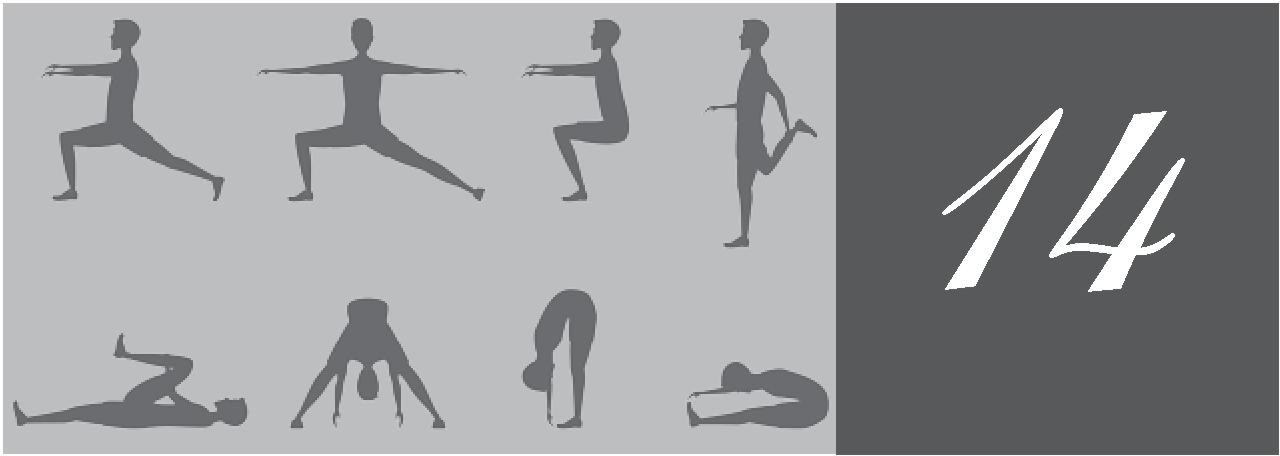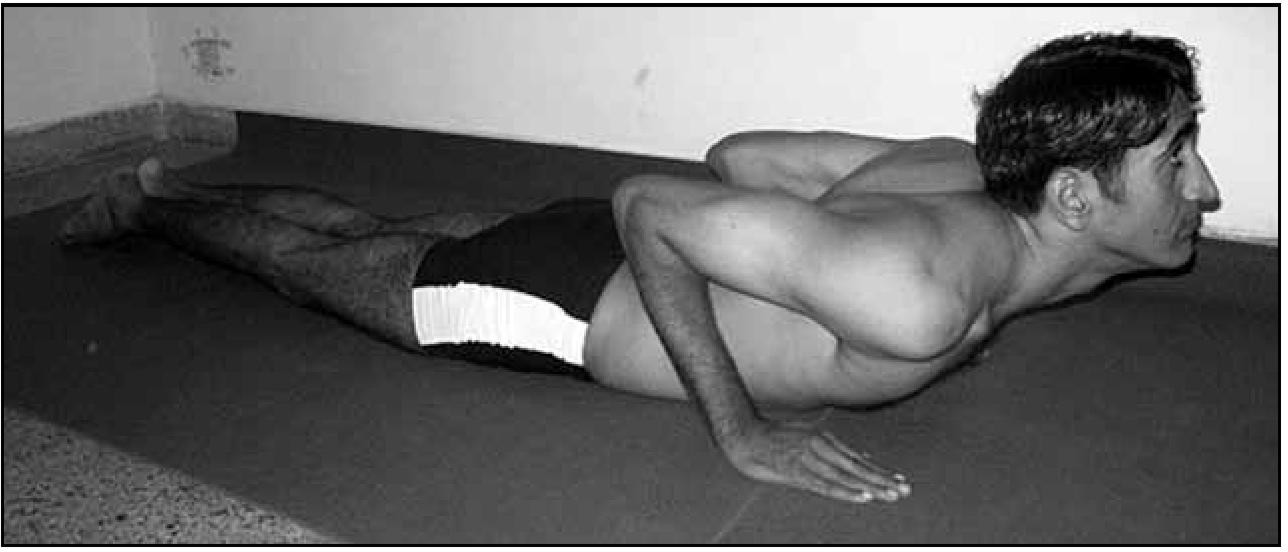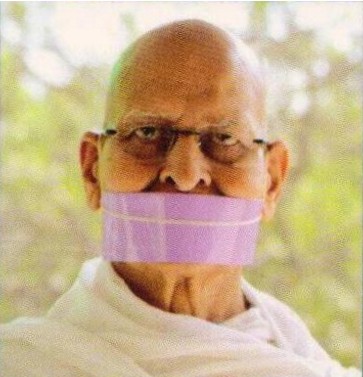
In Sanskrit 'Bhujang' means snake. While practicing this asana body posture resembles a snake; hence the name Bhujangasana. This asana is alternatively known as Sarpasana; 'Sarpa' again meaning snake. This asana can be practiced in three ways.
Method 1
- Lie down on stomach, forehead on floor, legs together, stretched straight and toes outwards touching floor. Keep hands parallel to body.
- Bring hands near shoulders and place them a foot away from the ribs. Take a deep breath and raise neck and chest slowly.
- Holding position exhale making a hissing sound. While exhaling the teeth must be together and lips apart.
- While inhaling raise body up to navel. Keep elbows straight and palms facing floor. Pull neck backwards and look up towards sky. Once in position, hold breath as long as it is comfortable.
- Exhale while returning to floor. Slowly bring neck, shoulders and stomach back to floor and relax for a while.

Bhujangasana (Snake Posture)
Method 2
Lie down on stomach as in Method 1. Place your hands on floor approximately 1/2 foot in front of chest.
- Inhaling deeply, slowly raise neck and chest half a foot off the floor. Exhale making a hissing sound. Remember to keep the teeth together and the lips apart.
- Inhale again and raise body up to the navel. Keep elbows straight and palms on floor. Pull head backwards and look up at the sky.
- Make a hissing sound while exhaling through mouth. Bring body, chest and neck back to floor. Relax body completely.

Bhujangasana (Snake Posture)
Method 3
Practice this method in the same way as the method given above. This time keep palms close to the chest.
Precautions
If pain in spine is experienced due to a previous heart attack or if there are any other related problems then practice of this asana should not be commenced without the guidance of a trainer.
A person suffering from abdominal complaints or hernia and splenic enlargement should not practice this pose.
Effect on Health
This asana lays great emphasis on breathing. As a result, inhalation brings in more quantity of oxygen and exhalation throws out carbon dioxide or impure air thus purifying blood.
The Method 1 impacts spine resulting in relief from back ache and loss of extra fat around waistline. The Method 2 and 3 impact the vertebrae at centre (lumbar) and at top of spine (cervical). Alongside, this asana influences muscles of shoulders and neck. Since inhalation is slow and deep, lung capacity increases. Since exhalation is forceful, any bad breath is got rid of.
The parts of the body that are most affected are the wrists, elbows, shoulders, neck and spine because they experience maximum stretch. The wrists, elbows and shoulders are strengthened and any aches and pains in these areas are relieved.
Any pain or discomfort in the neck region (cervical pain) disappears. The stretch experienced by abdominal organs keeps them healthy. Digestive system works at optimum efficiency because of adequate secretion of digestive juices.
As toes touches the floor, stretch is experienced right up to muscles and any stress or tiredness experienced by legs due to the day long activities is released. Knees get strengthened and as the name suggests one acquires swiftness of a snake.
With practice of Bhujangasana, the gonads, thymus, thyroid, pituitary and adrenal glands are affected. The thymus gland is situated in the centre of the chest. The secretions of the thymus gland help muscles grow. If secretion become irregular, muscular system is affected and body becomes weak. During practice of Bhujangasana, chest experiences pressure as palms are pressed down on the floor and body is pushed upward. This action affects thymus gland and keeps its functioning normal. When neck is pulled back thyroid gland also experiences pressure. As a result its secretion is balanced and body remains in shape and healthy.
The lifting of neck to look up at sky puts pressure on pituitary gland regulating its secretions thus strengthening the decision making process of the practitioner. Pressure on the gonads and adrenal gland keeps lust and anger in check.
 Muni Kishan Lal
Muni Kishan Lal
